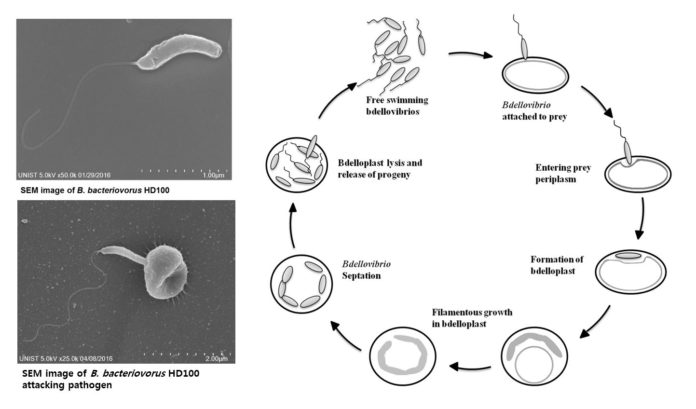Bdellovibrio and like organisms (BALOs) are bacterial predators that assault and feast upon other gram-negative microscopic organisms without hurting people. Hence, the utilization of ruthless microscopic organisms has been proposed as an elective way to deal with handle a scope of medication safe gram-negative bacterial diseases that can create in hospitalized patients. Be that as it may, late examinations have uncovered that some gram-negative microscopic organisms seem, by all accounts, to be impervious to BALOs.
UNIST scientists have recently revealed that the bacterium Chromobacterium piscinae produce cyanide, an inhibitory molecule, to defend themselves in the battle against Bdellovibrio bacteriovorus HD100.
During the study, scientists found that the amount of cyanide created by C. piscinae was sufficiently adequate to repress predation, yet not plainly harmful toward B. bacteriovorus HD100.

Their outcomes additionally demonstrated that C. piscinae created the defensive cyanide when given supplements as Dilute Nutrient Broth (DNB). Through a progression of tests, the exploration group likewise distinguished that C. piscinae are gone after by B. bacteriovorus HD100 when given in HEPES support however that it was safe when the tests were performed in DNB.
Wonsik Mun in the School of Life Sciences, the first author of the study said, “Our study suggests microbes may have means for resisting predation that only shows up in certain environments. This study also suggests that caution should be taken in defining bacterial strains that are susceptible to predation and those that are resistant, as secondary metabolites clearly can play a role.”
During another experiment, scientists test whether cyanide alone was responsible or whether some other compound also acted as an inhibitor. For that purpose, they purged and treat of the supernatant with vitamin B12a. Their results confirmed that cyanide is the main, if not sole, inhibitor responsible.
Professor Mitchell said, “Studying such mechanisms may lead scientists to better understand how some pathogenic bacteria protect themselves against antibiotics. To understand how germs may resist treatment, we need to look at the actual conditions in the host.”
The group now plans to look at how other predatory bacteria respond to cyanide, as well as other factors that can potentially inhibit or negatively impact predatory activity in microbes.
Wonsik Mun, et al., “Cyanide Production by Chromobacterium piscinae Shields It from Bdellovibrio bacteriovorus HD100 Predation,” mBio (2018).
